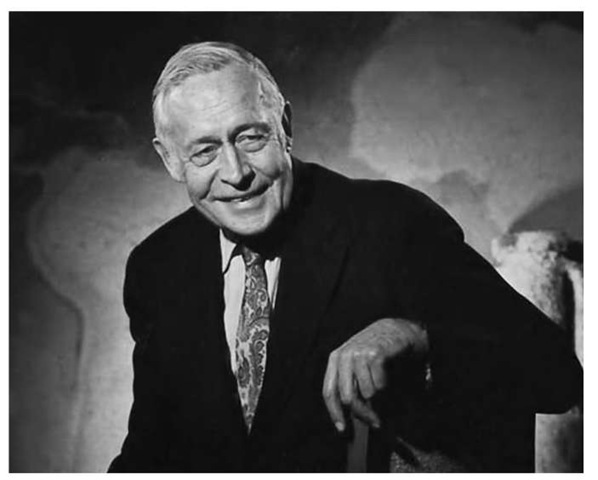(1909-91)
AN EARLY PREDICTOR of global warming, Roger Rev-elle helped to start the scientific debate on the issue in the late 1950s. He challenged the accepted notion that global warming was countered by the absorption of carbon dioxide from the oceans. Revelle discovered that the particular chemistry of sea water hinders such absorption. Because of the respect that he earned among the scientific community, Revelle was regarded as a spokesperson for science whose advice on as diverse matters as world population, agricultural policies, education, and the preservation of the environment were held in high esteem.
Born in Seattle, Washington, on March 7, 1909, Rev-elle was raised in Pasadena, California, and soon stood out as a gifted student during his academic career. In 1925, Revelle enrolled at Pomona College with an interest in journalism, but later switched to geology as his major field of study. In 1928, Revelle met Ellen Virginia Clark, a student at the neighboring Scripps College and a grandniece of Scripps College founder Ellen Browning Scripps. The couple married in 1931.
Revelle obtained his bachelor’s degree from Pomona in 1929, and then entered the University of California-Berkley to pursue his studies in geology. In 1931, his professor George Davis Louderback recommended him for a research assistantship in oceanography at the Scripps Institute of Oceanography in La Jolla, California. While at Scripps, Revelle took part in several expeditions on the Scripps, the institute’s small research vessel. He was also a guest on ships of the U.S. Coast and Geodetic Survey and the U.S. Navy. In 1936, Revelle completed his dissertation, "Marine Bottom Samples Collected in the Pacific Ocean by the Carnegie on its Seventh Cruise," and was awarded his Ph.D. He was immediately hired as an oceanography instructor at Scripps, under the directorship of Harald Sverdrup.
Roger Revelle lead navy research in oceanography. His carbon dioxide research led to his predictions of global warming.
During World War II, Revelle served in the U.S. Navy as the commander of the oceanographic section of the Bureau of Ships and became head of their geophysics branch in 1946. His reputation and influence in the navy quickly grew during the war and enabled him to substantially influence the navy research program in oceanography. Revelle received an official commendation for this work from Secretary of the Navy James Forrestal after the war. After the conflict, he returned to Scripps in 1948 and directed it from 1951 to 1964. The scientist was involved in supervision of the first postwar atomic test on Bikini Atoll, Operation Crossroads. He led the oceanographic and geophysical components of the operation. His task was to study the diffusion of radioactive wastes and the environmental effects of the bomb at Bikini.
During his directorship at Scripps, Revelle was also appointed to other prestigious positions such as chairman of the Panel on Oceanography of the U.S. National Committee on the International Geophysical Year (IGY). Scripps, which Revelle was constantly expanding thanks to his administrative skills, was initially designated as a participant in the IGY, but was later promoted to the main center in the Atmospheric Carbon Dioxide Program. As a result, Revelle’s interest in the general carbon cycle and the solubility of calcium carbonate grew and he began a systematic research which engaged him for the rest of his life. The result of this interest was a famous 1957 article published in Tellus, a European meteorology and oceanography journal, which Revelle coauthored with Hans Suess, one of the founders of radiocarbon dating. The article demonstrated that carbon dioxide had increased in the air as a result of the use of fossil fuels.
Following this discovery, in 1963, Revelle took a leave of absence from Scripps and committed himself to public policy. Revelle was among the first in the scientific community to bring the subject of rising levels of carbon dioxide to the attention of the public as a member of the President’s Science Advisory Committee Panel on Environmental Pollution in 1965. The committee, chaired by Revelle, published the first authoritative U.S. government report which officially stated that carbon dioxide from fossil fuels was a potential global threat. Revelle also founded the Center for Population Studies at Harvard University, and spent more than a decade as director. His primary interests were applications of science and technology to world hunger. In 1976, Revelle returned to the University of California-San Diego where he received the title of Professor of Science and Public Policy and joined the Department of Political Science.
As the chair of the National Academy of Sciences Energy and Climate Panel in 1977, Revelle concluded that about 40 percent of the anthropogenic carbon dioxide has remained in the atmosphere. It was produced two-thirds from fossil fuel, and one-third from the clearing of forests. In his role of spokesperson against the dangers of global warming, Rev-elle influenced public opinion on the carbon dioxide issue thanks to a widely read article published in Scientific American in August 1982. His research emphasized the rise in global sea level and the melting of glaciers and ice sheets caused by the thermal increase of the warming surface waters. Through his international scientific contacts, Revelle circulated his research findings and fostered debates about his findings and the threatening environmental and social effects of increased atmospheric carbon dioxide. The scientist was an early advocate of governmental policy and action.
Revelle was a respected member of many academic, scientific, and government committees. He was science adviser to the secretary of the interior, president of the American Association for the Advancement of Science, and a member of the NASA Advisory Council. In November 1990, Roger Revelle received the National Medal of Science from President George Bush.

